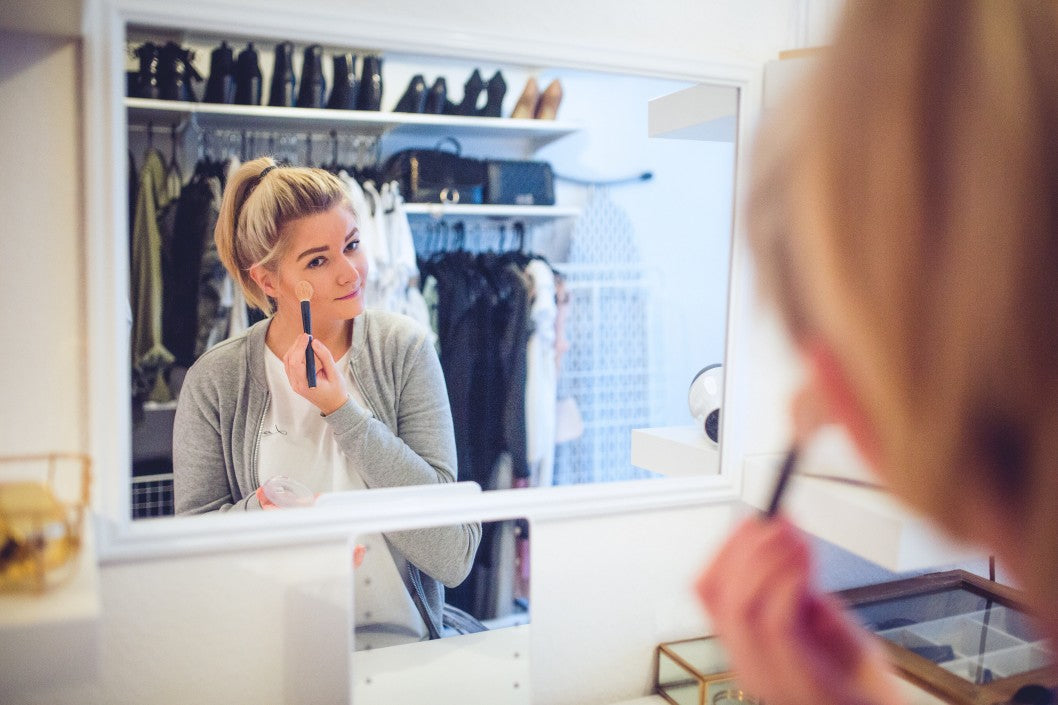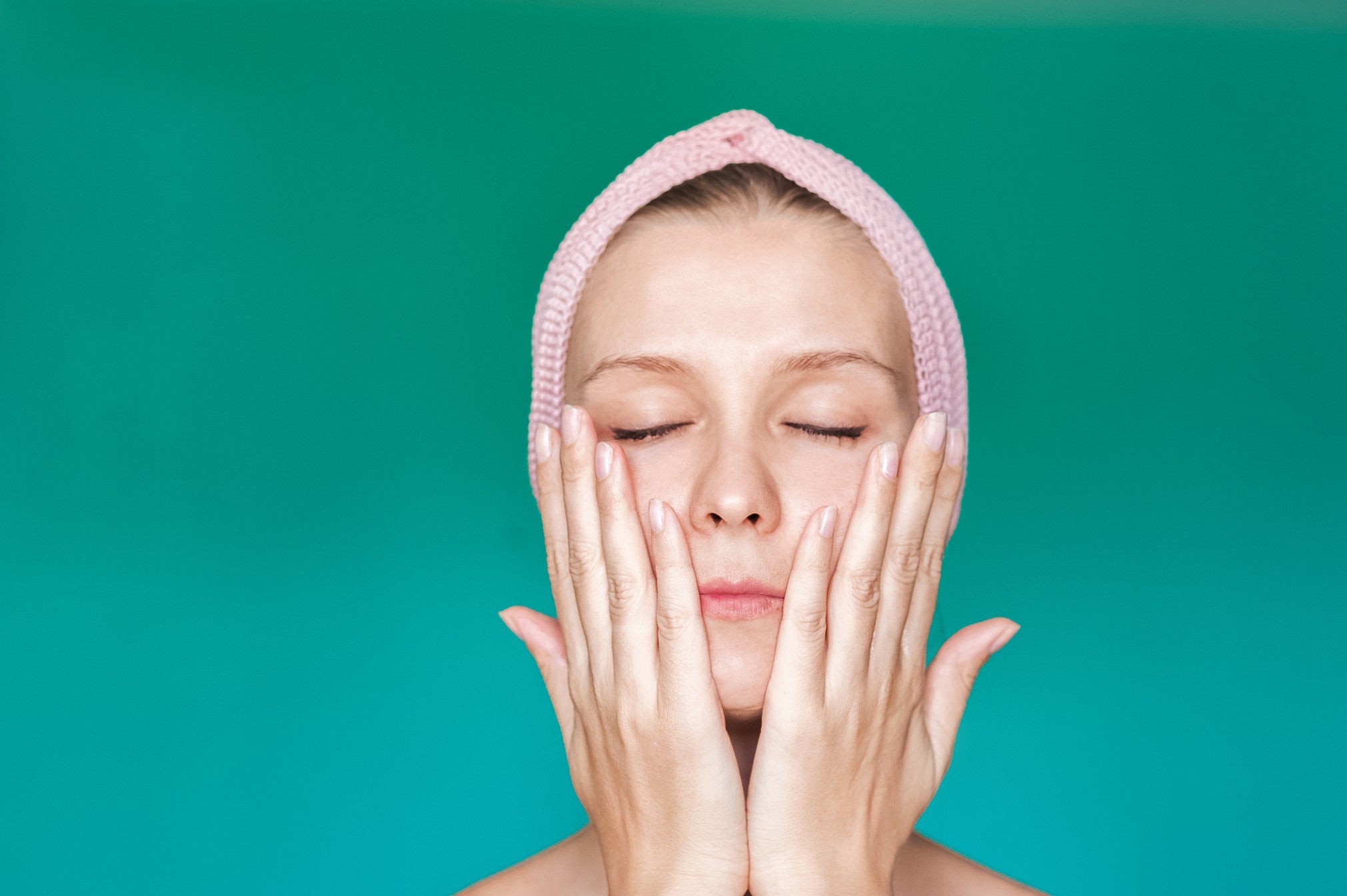
Skincare for teens; Acne, oil, blackheads and other skin dramas
School, friends, work, study… you’ve got enough to be worried about without your skin causing drama too. So why not introduce a few simple steps to minimise the appearance of oil and pimples and keep your skin looking great - better even than those airbrushed Instagram goddesses.
During your teens, your skin suffers from an onslaught of hormones, which leads to oily skin and hair, pimples, blackheads and those painful deep red lumps than never come to a head. You’ll also have an excess of keratin, which thickens the skin and contributes to blocked pores. Your mum’s skincare routine won’t work for you - her skin is aging, drying out and needing moisture. You need a routine of your own, personalised to young skin. To help you avoid breakouts and freakouts, here’s our natural skincare advice:
Cleanse to restore balance
This is a very important step in your skincare routine. While it can be tempting to try and wash that oil away, over-washing strips your skin of oil, which encourages your skin to produce MORE oil! So, chill out on the cleansing - just do it morning and night, properly.
Use a gentle cleanser like our apple juice foaming cleanser. If you have sensitive skin, use a non-foaming one such as our mango and apricot sorbet cleanser. Even if you have oily skin, don’t be scared of oil-based cleansers - they actually attract oil and remove sebum. Just remember to wash off with warm water and a face cloth. In the evening, if you wear makeup, consider doing a double-cleanse – oil based cleanser followed by gentle foaming cleanser. If you use a wipe after your wash and you’re still finding foundation on your skin, the first cleansing has not been effective.
Never sleep with your makeup on - it will block pores and cause pimples. If you’re truly exhausted, keep a pack of makeup wipes by the bed and remove as much as you can before you fall asleep. But don’t make this a routine thing – cleansing wipes are only for emergencies.
Tone and exfoliate gently
With your skin the way it is now, both toning and exfoliating are definitely helpful if you do them right.
A facial scrub should only be used once or twice a week. Choose a gentle product that doesn’t have huge grains, like our bamboo beads scrub. If you use harsh abrasives or over-scrub your face, you’ll end up scratching and damaging your skin, which leaves it more vulnerable to problems.
Toner is a good step after washing to help balance the pH of your skin. Make sure you don’t use an alcohol-based toner, as it will dry out your skin and cause more oil production. A gentle mist toner like our cucumber and lettuce toner tightens your pores and removes any last traces of makeup. It also lets you avoid the use of single-use cotton pads, which go straight to landfill.
There’s also no harm in using masks and at-home treatments. Experiment with ingredients to create a solution to your problems. Remember that your best friend’s skin is different to yours, so what she swears by might not work for you. Here are some pantry-sourced home facial masks to try:
- Natural plain yoghurt has lactic acid, so you can use it as a gentle peel
- Oatmeal is calming and soothing, soaks up oil, and helps to gently remove dead skin cells
- Honey is anti-bacterial, anti-fungal, moisturising and full of antioxidants
- Papaya has fruit acids in it that gently remove dead skin and leave your skin looking great
Always use a moisturiser
If your skin is oily, then you might think you can skip this step, but you can’t. If you leave your skin dry, then it will start to produce more oil to compensate.
A quick test will tell you if your skin is oily, dry or a combination. Wash your skin and then leave it for a couple of hours. If it gets dry, red and scaly, you have dry/ sensitive skin. If your entire face gets oily, then that’s true oily skin. If you have an oily T-Zone—your nose and forehead—that’s combination skin.
If you have oily skin, use a light gel or cream that doesn’t clog your skin. A combination skin can use a heavier moisturiser on the dry areas. Dry skin needs a heavier moisturiser. Trial some options and see what works for you – a safe bet is our antioxidant natural vegetable moisturiser, which is light and hydrating. When choosing your moisturiser, look for the words ‘non-comedogenic’ on the packaging.
Always wear sunscreen
If you have skin that’s healing from a pimple and you expose it to the sun, that area will become hyperpigmented and leave a dark spot on your skin. Aside from that, your future wrinkly self will thank you for wearing sunscreen every day. Sun damage is the leading cause of wrinkles; while you don’t care now, in 20 years you’ll be cursing yourself for being lazy. Trial sunscreens until you find one that’s light and doesn’t look greasy.
Some extra tips for beautiful skin
- Don’t put weird things on pimples. Toothpaste doesn’t work and might cause more problems. Spot creams containing tea tree oil or salicylic acid will help. Old fashioned iodine is good too.
- Do not pick, pop, or squeeze pimples - it only makes them worse. If you must, follow our guide here to dealing with them.
- Skin blotting paper will help to reduce shine from extra oil. At a pinch, you can use a clean tissue.
- If you have bad pimples and acne spots that are painful and inflamed, go and see your doctor or a dermatologist. Don’t suffer through it.




Leave a comment
This site is protected by hCaptcha and the hCaptcha Privacy Policy and Terms of Service apply.